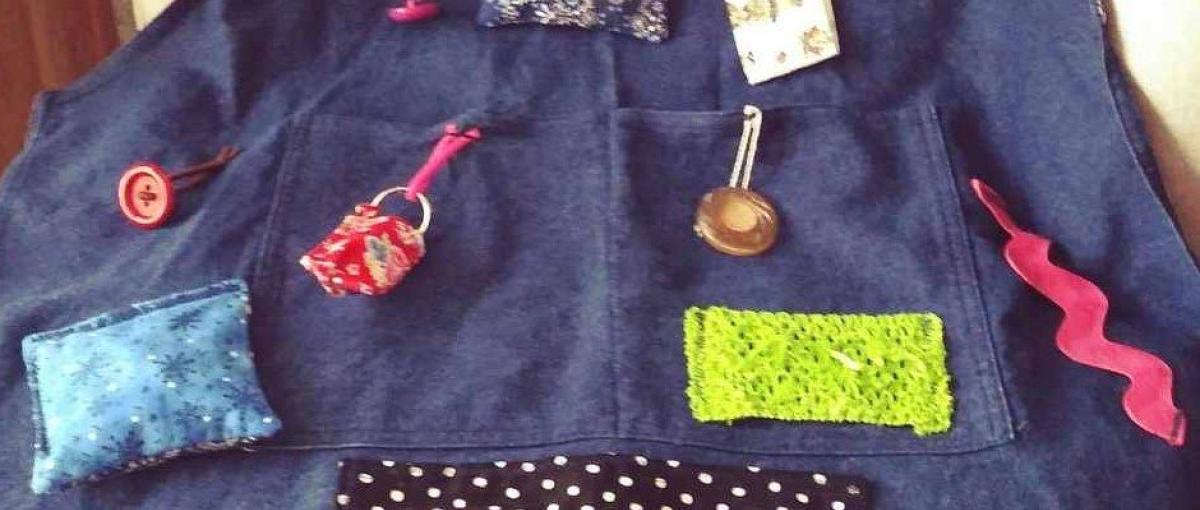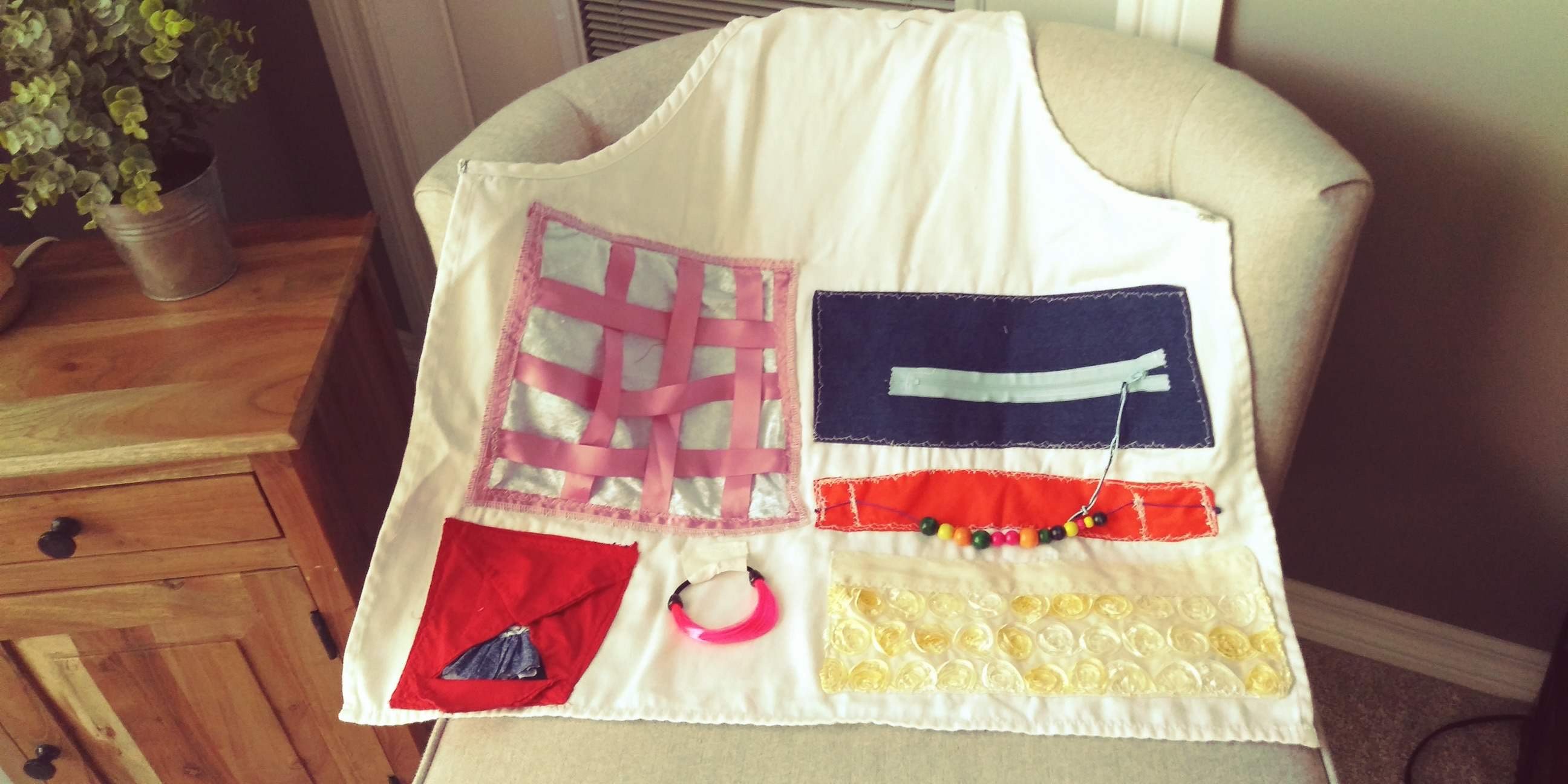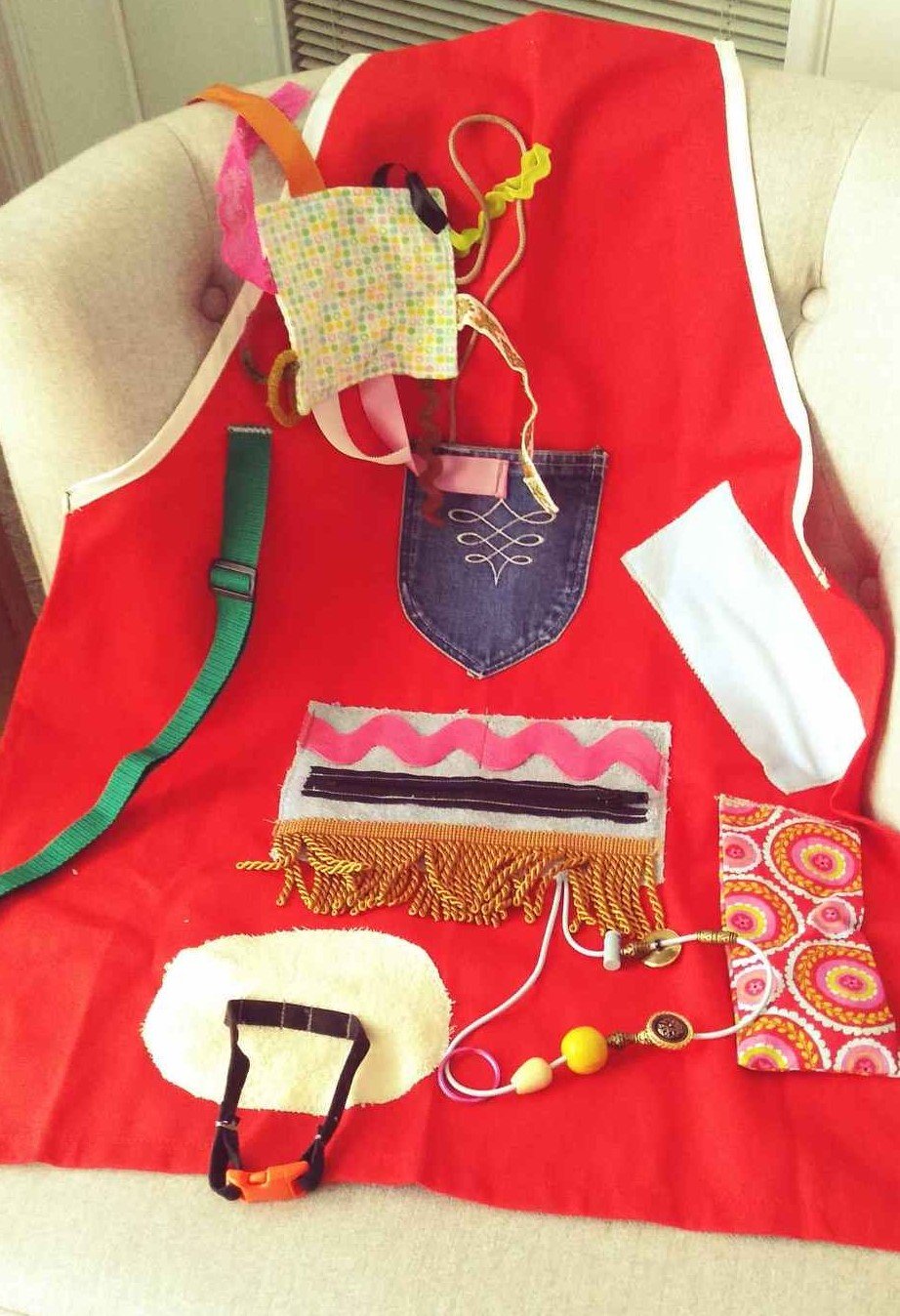Comfort through an apron
Activity aprons provide purpose for residents with dementia

July 6, 2020
By Brenton Driedger, Social Media and Storytelling Advisor, Covenant Health
Vanessa Freel said goodbye to her mom, Penny, eight months ago. She remembers watching her decline for months as she lived with dementia.
“She didn’t even know how to use a fork anymore. She was just lost,” says Vanessa.
Penny spent her final 11 months at St. Therese Villa in Lethbridge. While she lived there, a friend gave her a special apron with various fidgets that she could touch and manipulate to provide stimulation and purpose.
“She wore it everywhere. Every picture, every activity, she has that apron on, and she’s playing with it,” says Vanessa. “She couldn’t verbalize it, but the way she used it, it was apparent it provided huge purpose for her.”

Staff and families started asking Vanessa where her mom got the activity apron because they wanted to find one for their loved ones. And when Vanessa was hired as resident care manager at St. Therese Villa a few months later, she and her colleagues recognized the need to offer the aprons to other residents with dementia.
“You’ll often see people toward the moderate to end stage of dementia rubbing counters or shaking or fiddling with their thumbs because they just don’t know what to do in their world,” says Vanessa.
The full kitchen apron has tactile stimulations attached, such as faux fur, zippers, felt, ribbon, buttons and beads. Residents with advanced dementia are often unable to participate fully in recreational activities, but they find purpose and comfort in playing with the textures and fidgets.
“When they have that apron on, they can still go to recreation and listen to music, but they’re busy rubbing the buttons or doing up the zipper. It’s a sensory stimulation, but it also keeps them busy so they can be fed easier, they can be calmer listening to music. When there’s no one visiting them and they’re alone in their room or in front of the TV, keeping them busy gives them purpose and hopefully makes them less lonely.”
Vanessa and activity volunteer coordinator Christey-Ann Veldman asked St. Therese volunteers to make a few aprons and began collecting donated materials. Christey-Ann says the volunteers were so excited that they immediately started thinking of ways to improve the design.
“The funny thing is we had all that material, but then when the volunteers came in — and they’re all sewers themselves — they said, ‘Oh no, we don’t need that stuff. We’ve got lots of our own stuff, and we’ve got lots of ideas.’ This is great because then all the activity aprons are a little bit different.”
- Read more: Busy blankets calm residents with dementia
Volunteer Karen Nemeth enlisted the help of her church ladies’ group. They enjoy sewing aprons together, as well as hunting for new materials.
“As the women look, they see things in their homes or things that they see at the store that they will purchase and add to them that are kind of exciting. ‘Oh, that will work for the aprons.’ It’s an ongoing creative process that’s inspiring as we do it. It kind of gets your creative juices flowing.”
The first aprons were delivered in January. The volunteers have made 10 so far, and more are on the way. They are also adding design elements to improve the quality and durability. Karen says they’ve learned tricks about using denim or other thicker fabrics and securely attaching the fidgets so they don’t fall off when the aprons are washed.

The volunteers are looking for ways to customize the aprons for residents based on their interests, such as including short ropes, denim and a fabric that feels like cowhide for a resident who used to raise cattle. Christey-Ann says they might also invite family members to submit ideas for their loved one’s apron.
“They could go to a volunteer and say, ‘These were their interests. They loved fishing, woodworking,’ whatever,” says Christey-Ann. “And then we could incorporate those specifics into that apron.”
Karen says her group is involved in several service projects in Lethbridge. She thinks it’s important to give back to the residents.
“These people have given to their communities. They’ve raised families. They’ve had careers. And now many of them are quite limited in their abilities. So it helps us to recognize how much they did for others, and we can help them to have some quality of life through our efforts.”
Vanessa has framed her mom’s well-worn apron and displays it in her office. Penny’s life continues to inspire Vanessa and the activity apron project she helped start.
“I think of her all the time,” says Vanessa. “It’s an absolute honour to see that even though I’ve lost her, what I’ve learned from her helps promote our residents’ quality of life. When I see someone with an activity apron on, I’m so proud of what she brought to my nursing career and my ability to pass that legacy on.”